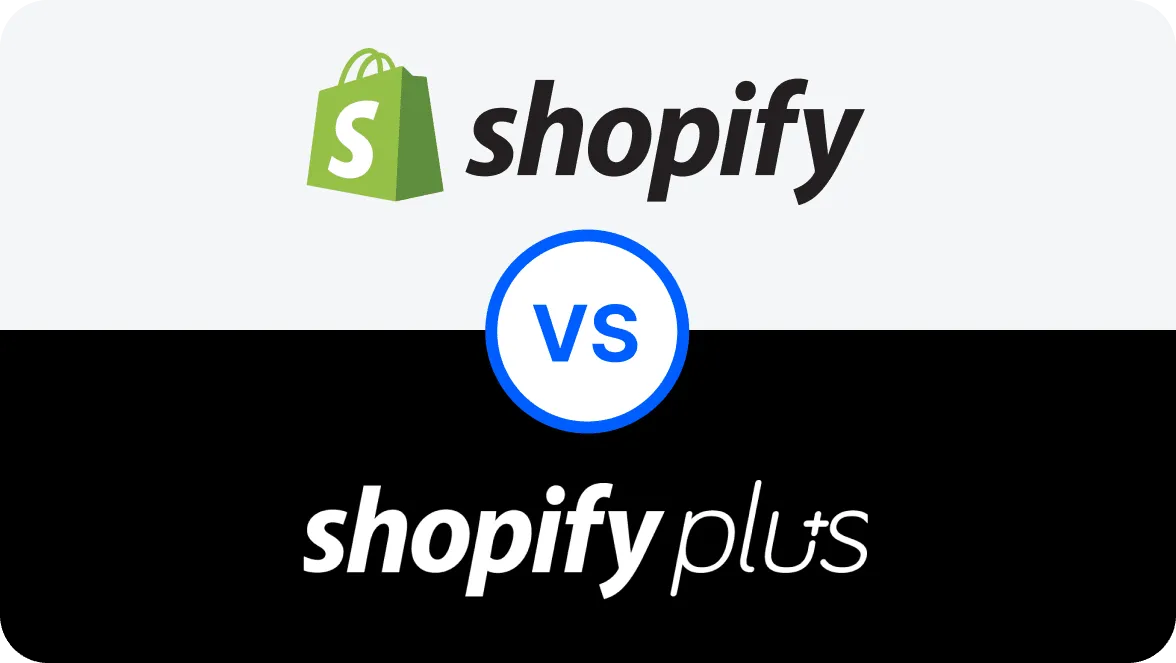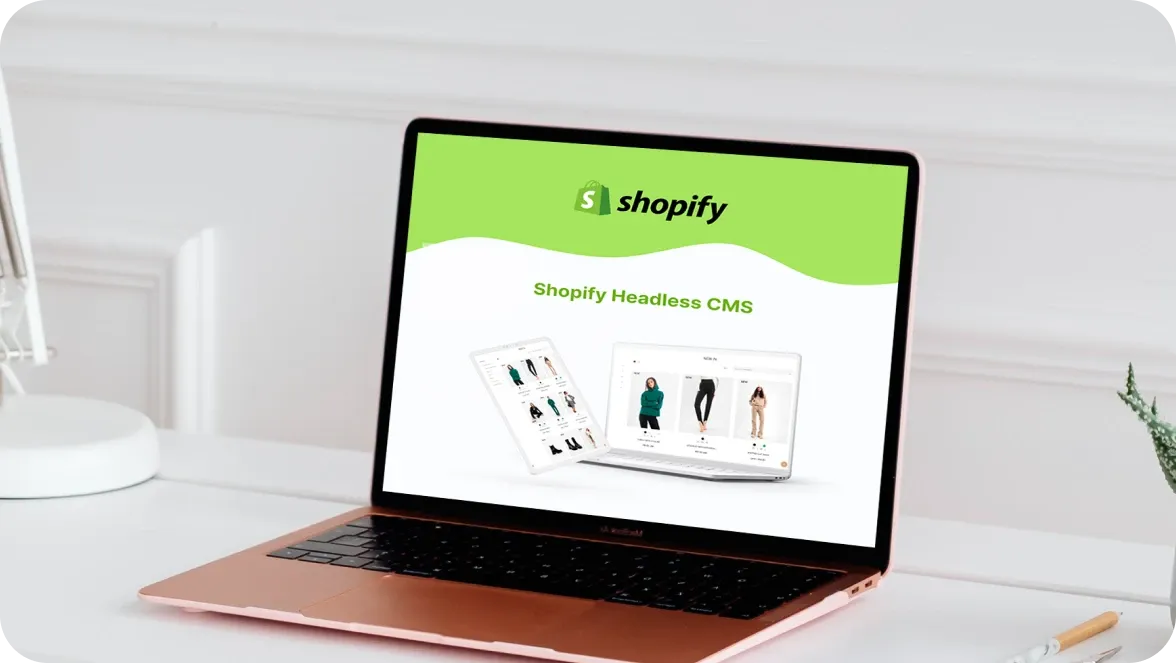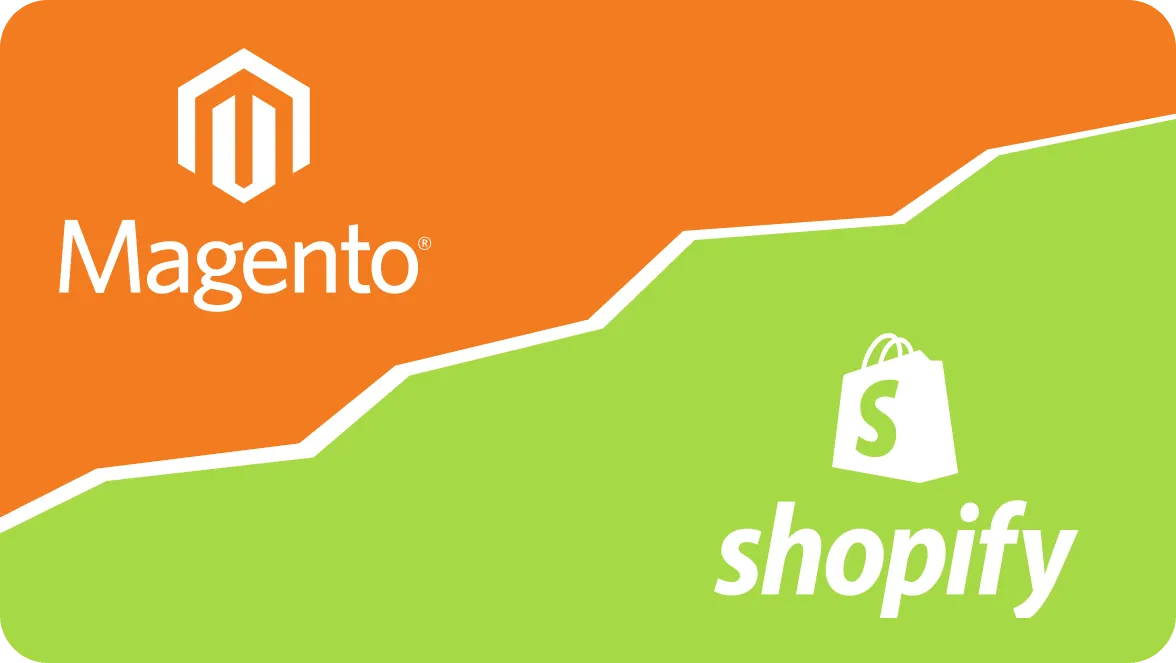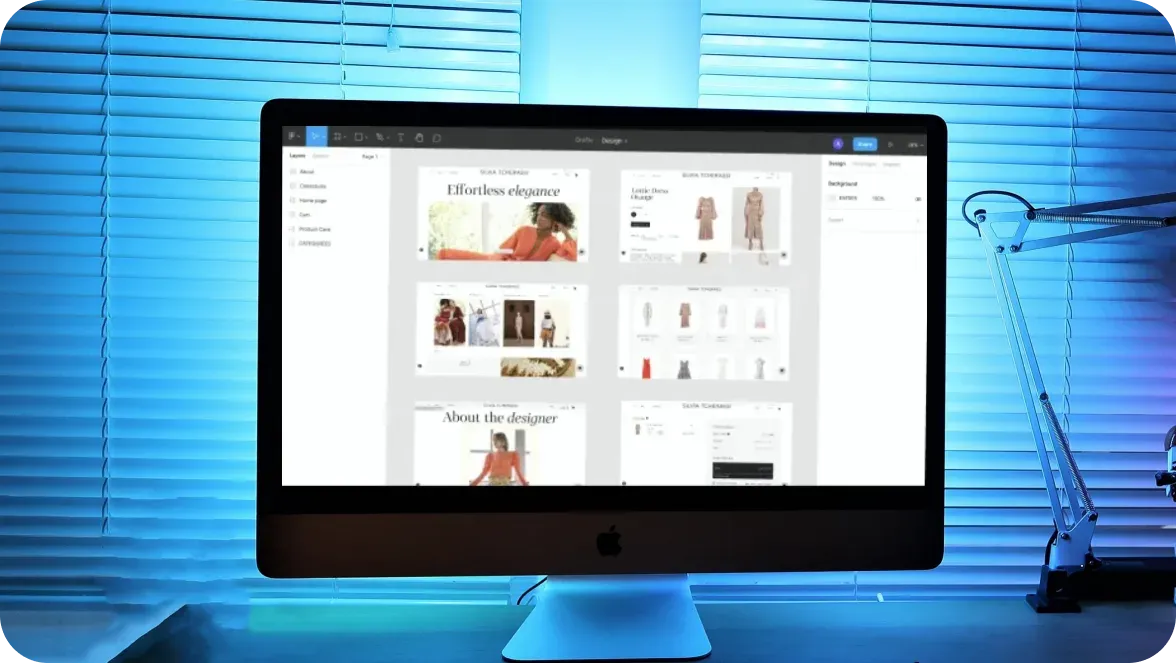
Personalization is a key factor in accelerating your Shopify store's growth. But what exactly is e-commerce personalization? The main idea is to tailor the shopping experience for each visitor to your website. Online sales are projected to surpass 8.1 trillion by 2026, but the e-commerce landscape is constantly changing as consumer behaviors evolve alongside technological advancements.
Today's shoppers expect seamless online experiences across all channels. Even small details like product page design and checkout options can negatively impact conversion rates.
Additionally, customer competition is fierce, with over 4.5 million Shopify stores worldwide.
Considering this, working with a CRO specialist can be the simplest way to improve conversion rates. However, there are other ways to invest in Shopify conversion rate optimization. Let's explore some of the most effective e-commerce personalization tools that have helped many Shopify store owners succeed.
Kickstarting conversion rate optimization - where to focus first
Conversion rate optimization (CRO) aims to improve your store's conversion rates, thereby increasing revenue. This involves implementing strategies such as boosting contact form submissions or app downloads.
Let's talk about Shopify conversion rate optimization. It aims to improve:
Online sales
Add-to-cart actions
Wishlist additions
Account or newsletter sign-ups
Industry experts suggest that most e-commerce stores have an average conversion rate of 2.3-3%, while Shopify stores typically hover around 1.4%. However, numerous internal and external factors can impact conversion rates.
Elements such as website performance, user experience (UX), and external market trends all influence shopping behavior on your site. As a result, Shopify conversion rate optimization is an ongoing process rather than a one-time endeavor. To enhance conversion rates, Shopify merchants should calculate their current rate using the formula:
Continual assessment, review, and data analysis are essential for small improvements. This guide will show you various steps to create and deliver a personalized shopping experience in your store.
Navigating consumer preferences for optimal conversion rates
To boost Shopify's conversion rate, first focus on understanding your customers and what influences their purchases. Start by analyzing data and identifying factors that drive or hinder conversions in your store. This insight will help you overcome obstacles and reach your goals.
Let's start by looking at the numbers! Begin with quantitative data like website traffic and conversion rates—these important metrics drive sales. While Shopify provides useful insights, you can also enhance your analysis by integrating Google Analytics for a more detailed view.
Engage customers with automated surveys and pop-ups to learn why they hesitate to purchase or their specific product preferences. Also, consider using Shopify chatbots to gather direct customer feedback, which can be invaluable for product development, improving customer service, and enhancing satisfaction. Also, pay attention to reviews, as they reveal customers' honest opinions about your brand, products, and website experience. By understanding their feedback, you can identify areas of your website that require improvement and make informed decisions about marketing personalization.
How product recommendations can help
In 2024, customizing the shopping experience will become a key tactic for improving Shopify conversion rates. About half of consumers want their favorite brands to understand their preferences and provide personalized recommendations. Thus, offering onsite personalization can boost sales by about 20%.
Many shopping websites use recommended searches, which suggest product names, display related options, or show items based on browsing history. This tactic depends on users' behavior and past purchases. Adding it to your website improves functionality and helps visitors find products faster. The key reason is that personalization can boost conversions by making the search process smoother for customers.
Suggesting products based on past purchases is a straightforward method to personalize the customer experience. Shopify development company can easily integrate special tools like Bold Product Recommendations, LimeSpot Personalizer, or Nosto to use customers' order history and cookies and recommend items to those who have accounts on your website.
Suggestions for related or complementary products
A great way of effective onsite personalization used by e-commerce brands is by suggesting related or complementary products. This means showing customers items similar to what they've looked at or searched for. These products are used in conjunction and help boost sales.
Personalized product recommendations contribute around 31% of an e-commerce site's revenue. Using your customers' data is a great option to understand their interests and offer relevant suggestions.
Even if customers don't find exactly what they were initially searching for, your site can show them similar products. Also, on the purchase page, displaying complementary items can improve their shopping experience before they complete their purchase.
Ensure the value of your proposition
Boosting conversion rates on Shopify is crucial but often neglected. Online shoppers need to catch up on the tactile experience and guidance from sales staff. You should clarify your value proposition using these effective strategies to make up for this.
Use high-quality visuals
Using images and videos is crucial for displaying your products effectively. You can boost conversion rates on your product pages by offering a variety of visuals, including zoom options and demonstrations of product usage. Shopify web design agency can utilize various design techniques to create captivating animations that elevate your website.
Promote offers with banners
If you provide perks such as free returns, delivery, or ongoing sales, display these on your website prominently. Using banners or pop-ups helps instantly grab customers' attention and inform them about your latest offers.
Harness the potential of FOMO
Even in 2024, the Fear of Missing Out (FOMO) remains a significant factor in driving consumer behavior and shaping social interactions. Research indicates that 60% of consumers purchase within 24 hours when experiencing FOMO about an offer. Luckily, there are various methods you can utilize FOMO through Shopify apps. One of the tools of personalization is a Shopify app like "Ultimate Sales Boost" to create urgency and trigger the Fear of Missing Out (FOMO) among your customers. Also, our dedicated shopify developers can achieve this by adding banners to product pages or using pop-ups to notify them about exclusive discounts becoming available.
Additional options include:
- Implementing low-stock notifications to inform customers when a popular item is running out of stock.
- Displaying real-time purchases and social proof notifications on your website.
- Incorporating countdowns and timers on your homepage for flash sales.
It's worth noting that your offers don’t always have to revolve around discounts. You could also provide limited-time access to express delivery or offer free shipping to enhance conversions. It can be an effective strategy for increasing sales without compromising your profit margins.
Use a clear selling strategy
Customers prefer clear information about product delivery times, return policies, and pricing. Thus be ready that, unexpected fees during checkout can cause about 55% of customers to leave the website. To prevent this, make sure your website communicates expectations. Display shipping and delivery costs on product pages or use banners to transparently outline shipping expenses, delivery times, and other relevant factors.
Creating a wishlist
Customers frequently like to add products to a wishlist for future reference. First off, wishlists allow them to express interest in unavailable items or save products for later purchase. As DigitalSuits has provided Shopify integration services for more than 7 years now, we have some useful tips for you.
A fantastic personalization idea is to use Flits to enable easy wishlist integration. This app allows shoppers to conveniently add products from your catalog to their wishlist. Moreover, they can access their personalized customer account to view and directly purchase items from their carefully selected wishlist.
Leverage user-generated content
User-generated content can be highly high-quality and usable in production for saving significantly on expenses. Additionally, you also must consider that other consumers often trust and embrace user-generated content more.
Personalized thank-you pages
For retaining customers, personalized thank-you pages are crucial. First, it is the opportunity for repeat transactions starts at the thank-you page, where shoppers have already shown interest in your products. Consider using ReConvert on your Shopify store. It will allow you to cross-sell products based on the shopper's recent order, enhance engagement, and increase the likelihood of repeat purchases.
Tailored email communication
Good communication shapes your store's customer experience. An effective strategy based on using automated, personalized emails. Many Shopify merchants send generic emails, resulting in low engagement and conversions. We recommend to personalize your emails based on customer interactions, location, and preferences for better outcomes.
Personalized marketing often yields positive results, with customized emails achieving six times higher transactional rates. Tools like Klaviyo can automate emails based on customer behaviors, boosting conversion chances. Additionally, Klaviyo's Flow Builder makes it easy to set up personalized emails for every stage of the customer journey.
Introducing social proof
Expanding on our previous suggestion, one of the effective methods to boost Shopify conversion rates and foster business growth is harnessing social proof. This can begin with prominently featuring reviews and star ratings on your website. Research shows that approximately 72% of consumers read reviews before purchasing. By showcasing reviews directly on your website, you can prevent potential customers from leaving to search for reviews elsewhere.
Take Pattern Brands' website as an excellent example. In addition to sharing reviews, they calculate a rating for each product based on customer feedback. So, consider creating a dedicated review page featuring detailed testimonials and case studies from your prominent customers tailored to your product offerings.
Another impactful approach to demonstrate social proof for Shopify conversion rate optimization is using trust badges. These badges reassure customers that your store prioritizes data security and protection. You can instill trust by:
Installing an SSL certificate on your store
Displaying images of accepted credit card and payment methods
Including PayPal or McAfee security badges
Showcasing badges highlighting recent awards or accolades of your store.
Improve checkout and use re-engagement strategies
Creating a positive buyer experience boosts customer lifetime value (CLV), builds loyalty, and encourages repeat purchases. As a result, a poor checkout experience is a major reason for abandoned carts, with up to 21% of consumers leaving due to checkout complexity. However, there are effective methods to improve the checkout process, and let’s see what they are.
Simplify the checkout process
One of the methods is to use clear progress indicators so customers can track their journey toward completing the purchase. Another option you can use is to offer a quick-buy option, making it easier for customers to add products to their cart or proceed directly to purchase. Further strategies to optimize the checkout experience include:
Implementing a one-page checkout.
Simplify checkout by putting it all on one page, which makes it easier for customers to navigate and more convenient. Don't overload customers with too many form fields. Consider using Shop Pay for instant checkout.
Providing multiple payment methods
Shopify offers different payment options like PayPal Express Checkout, PayPal Credit, Venmo, and PayPal Pay Later, simplifying financial transactions and improving the customer checkout experience. By offering alternative payment methods you can boost both sales and meet customers' preferences.
Guest checkout option
This option enables customers to buy without making an account. As research shows about 34% of customers leave when asked to register before buying. Luckily, a guest checkout option removes unnecessary obstacles for customers and makes checkout smoother.
Re-engagement strategies through remarketing & retargeting
Sometimes, visitors browse your Shopify store but forget about it later. That's where remarketing and retargeting strategies come in. Remarketing and retargeting aim to reconnect with visitors who didn't buy during their first visit. Remarketing involves reaching out to customers across different platforms, like emailing those who left items in their carts.
Retargeting uses cookies to show targeted ads to people who visited your site before as they browse the web. Both strategies give friendly reminders to customers, boosting store conversions.
Use automated messaging techniques
When an online shopper shares their email address or mobile number with your brand, it opens up another avenue for engagement and conversion. Consistently reaching out to customers allows you to stay connected, regardless of their location, thereby keeping your company top-of-mind. Here are three effective messaging techniques to capture their attention:
Abandoned cart messaging
While optimizing your checkout experience is crucial for reducing cart abandonment, it's impossible to eliminate it. Many shoppers become distracted and leave e-commerce sites with items still in their carts. In such cases, you can gently remind them with an abandoned cart email. For instance, clothing company Pattern Brands sends customers emails containing the items they left in their cart, encouraging them to return and complete the purchase.
"We Miss You" Messaging
A friendly email reminder can be effective if a shopper forgets about their cart. Sports fan gear seller Supporters Place sends emails to reengage visitors and announce new, exciting products, reminding them of items they previously viewed.
Order follow-up messaging
The checkout process doesn't mark the end of your relationship with a customer. It's important to check in with buyers after their purchase and provide customized product recommendations based on their previous orders.
Measure your success and iterating
After launching your e-commerce personalization campaigns, it's crucial to keep a close eye on their performance to ensure they meet your goals. Identify successful strategies and gradually improve them to make your campaigns more effective.
Here are some helpful tips:
Track key metrics: Keep an eye on important performance indicators like click-through rates (CTR), conversion rates, cost per conversion, return on ad spend (ROAS), and others. This helps you make informed decisions based on data.
Conduct A/B testing: Test different elements like ad copy variations, headlines, call-to-action phrases, or offers to see what works best with your audience.
Regularly review and make changes: Make analyzing and tweaking your strategies a regular practice. Spend time reviewing data, spotting trends, and making improvements to boost performance over time.
Takeaway
In today's digital era, customers expect a personalized experience. However, not all brands effectively meet this expectation and use the benefits of e-commerce personalization, as 62% of shoppers feel that companies could enhance their customer experiences further. Thus, a strategic approach to e-commerce personalization is a priority in distinguishing your business in the market. Understanding the fundamentals of e-commerce personalization and implementing it with an expert Shopify Plus development company can significantly drive sales, retain customers, and augment customer lifetime value.




































Was this helpful?
0
No comments yet